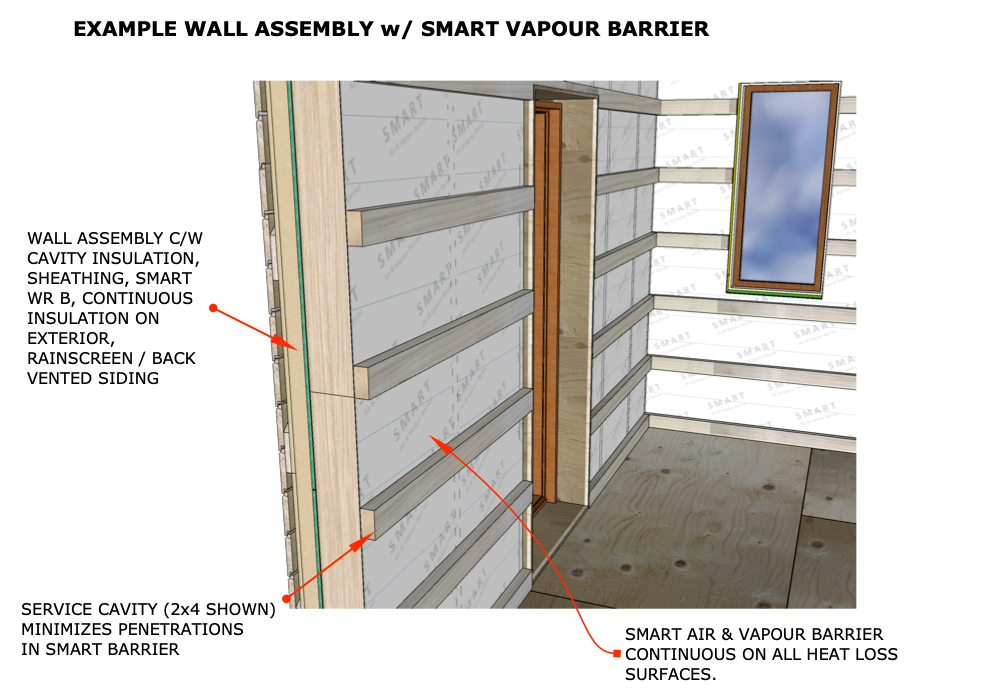"Smart" Air and Vapour Barriers
New 'smart' air and vapour barriers have pores that open or close, depending on the temperature and humidity in a building.
While remaining airtight, the pores keep vapour out in cold, dry months and allow vapour to escape in warm, humid seasons. These materials are more correctly called a vapour retarder because of this selective behaviour.
Smart barriers are made of a variety of plastics and paper - polyethylene copolymers, polyamide nylon, and fibreglass reinforced construction paper. In every case, they have properties that allow for porous action that either allows the passage of vapour or restricts it.

With assemblies that have increased levels of insulation, managing moisture levels inside our buildings creates added challenges:
- Tighter and more insulated buildings will see humidity increase, mainly from occupant activity.
- Airtightness is critical in high-performance buildings, both to decrease heat loss and to prevent moisture-laden air from getting into built assemblies.
- MECHANICAL VENTILATION is a must for new and retrofit construction that makes a building more airtight and insulated.
Using smart barriers is one way that high-performance buildings are decreasing the risk of moisture build up and air leakage.